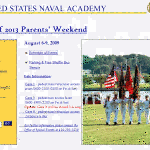December 10, 2013
The Tablet’s ‘Killer App’
Kids love tablets (spelled I-P-A-D). It doesn’t matter that they won’t run most software, don’t have USB ports, have no flash, allow very little storage, and can’t print (with ease) because kids aren’t using them for that. In fact, according to a report from the UK’s MailOnline, most kids use tablets to play games, watch videos, and access the internet.
Which is different from how students (as a subset of ‘kids’) use tablets. When querying children about the education use of tablets, here’s what Nielsen found:
[from Nielsen’s quarterly “Connected Devices Report” and similar to the Ofcom Children and Parents: Media Usage and Attitudes Report though the MUAR finds 97% of children use tablets for school.]
As a tech teacher, I was surprised at the high email ranking. Conventional wisdom says kids don’t email, preferring texting, yet here, it’s the #2 most popular use. At the very least, I would have put it behind ‘reading books’, an activity probably at the cusp of why kids received the tablet: Parents want to encourage reading.
Note-taking
What really got my attention was the 40% who use tablets for note-taking. Sure, that’s a lot, but I expected more. In fact, let me go on the record that this number will increase substantially when students get used to having a tablet in their backpack. ‘Note taking’ is what I’d consider the proverbial ‘killer app’ when it comes to tablets and education (For those who don’t know, Merriam Webster defines ‘killer app’ as ‘a computer application of such great value or popularity that it assures the success of the technology with which it is associated; broadly : a feature or component that in itself makes something worth having or using’). What could be simpler than a student pulling out their tablet any time they need to take notes–with the keyboard or a voice recorder. They can even tape an entire class or lecture for review later. Students who couldn’t make class (sick, family emergencies, whatever else keeps kids out of school) can arrange with the teacher to tape it by activating both parties’ (free) Google Voice. A movie’s good too–a large file, but Google Drive (accessible from tablets) can handle it easily and then share it with whoever needs it.
Other good note-taking apps include the built-in Notes (basic, but functional), Google Docs, Notability–I know there are more.
The ability to take notes is not the problem. The issue is getting students used to that. Which maybe means getting teachers used to it. At some point, both parties will recognize the synergy and no one will use paper and pencil anymore.
Digital Textbooks
Another use that should be the killer app is digital textbooks. The late Steve Jobs, founder of Apple, believed textbooks to be an $8 billion market ripe for “digital destruction.” Publishers seem to agree. Every month sees more interactive, colorful, intuitive books popping up in classrooms around the world. All the major book resellers–Kindle, Barnes and Noble (what’s left of them), Amazon–are in this market, as well as dozens of other companies specifically focused on provisioning students (i.e., Chegg). Not only are digital textbooks easy to carry, cheaper, and more durable, they’re updatable, which allows schools to keep curriculum current. The reason this use languishes in the #3 spot is because so far, the product hasn’t lived up to its hype. Publishers say once they come up with features like note-sharing, digital annotation, instant quizzes, links to social networking, videos and the ability to add third-party content, the future will be unstoppable.
And, if you have a tablet, you’ll use it to read digital texts.
Purpose-built Tablets
‘Purpose-built Tablets’ are the type you see in medical environments where a doctor can access information and not be distracted by anything unrelated to the patient. You may have seen your plumber use these, too. He came to your house, swiped through his company prices and services to come up with exactly what you needed, and when he finished, took your payment and digital signature. Wow.
They’re now coming to a school near you. Student-ready tablets suited exclusively for academic environments such as Educational Resources’ LearnPad come complete with standard school materials, specific internet access, apps integrated with the school curriculum. No distractions. No social media. No videos that weren’t cleared. No oops-your-child-saw-what? These tablets provide access only to the digital places students need to go–online sites, digital books, specially-picked videos–and flash isn’t a problem (flash is back). Students love them because they’re digital–which means they’re cool and cutting edge. Teachers love them because they focus on what needs to be studied.
Yes, there are a whole lot of reasons students use tablets, but so far, none has taken off. One will, I assure you. What I don’t know is if it’ll be note-taking, digital textbooks, or purpose-built tablets that will turn tablets from the poster child for education reform to real change. What do you think?
More on tablets:
Which is better for schools: iPads or laptops?
How to Pick iPad Apps for your Classroom
Jacqui Murray has been teaching K-8 technology for 15 years. She is the editor of a K-8 technology curriculum, K-8 keyboard curriculum, K-8 Digital Citizenship curriculum, and creator of technology training books for how to integrate technology in education. She is webmaster for six blogs, CSG Master Teacher, an Amazon Vine Voice book reviewer, Editorial Review Board member for Journal for Computing Teachers, CSTA presentation reviewer, freelance journalist on tech ed topics, a columnist for Examiner.com, and a weekly contributor to TeachHUB. Currently, she’s editing a techno-thriller that should be out to publishers next summer.







